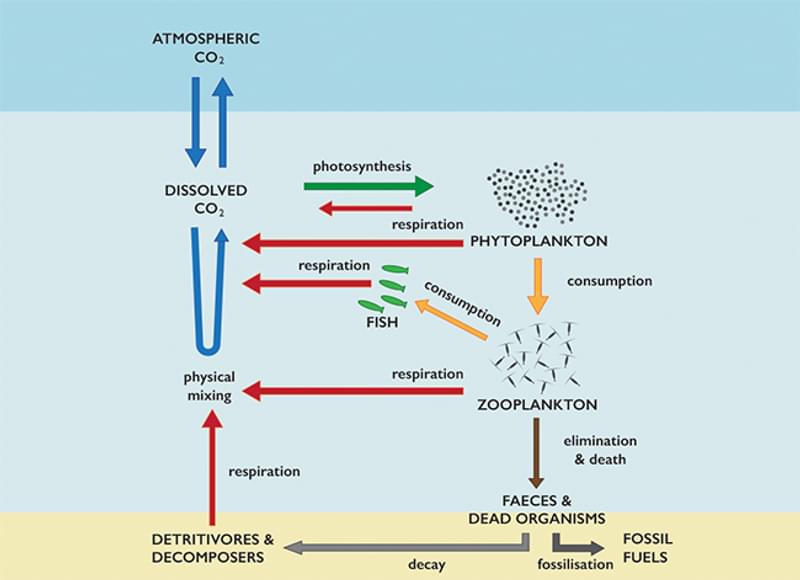Learn more: What is the marine carbon cycle?
Where is the carbon?
There are four major carbon stores on the planet. The ocean contains the bulk of the world’s carbon with 38,855 GtC (Gigatonnes of carbon). The next largest store is in soil and sediment. This includes soil, fossil fuel deposits, marine sediment, permafrost and carbonate minerals such as chalk and limestone. Carbon is also stored in living things such as plants and animals. The store most debated in the news is the atmospheric store, accountable for climate change.
Carbon sinks
Carbon sinks refer to the net uptake of carbon by terrestrial and marine ecosystems. The ocean acts as a carbon sink, absorbing 1.6 GtC per year. While this is beneficial for the levels of atmospheric carbon dioxide, there are potential ramifications with changes in ocean chemistry, through the process of ocean acidification.

Carbon fluxes
The arrows on Figure 1, above, show carbon fluxes, the movement of carbon between the stores in Gigatonnes per year.
From left to right, the arrows show:
78.4 GtC released from the ocean into the atmosphere each year.
80 GtC absorbed by the ocean from the atmosphere each year.
8.9 GtC released into the atmosphere through man-made or anthroprogenic activities, such as land use change, burning fossil fuels and cement manufacture.
0.4 GtC captured in sediment in the ocean and lakes through decay. This is a very slow process.
118.7 GtC released into the atmosphere through plant respiration each year.
123 GtC absorbed by terrestrial plants through photosynthesis each year.
How does carbon reach the bottom of the ocean?
Carbon can take two routes to the ocean’s depths, as shown in Figure 2. These routes are referred to as ‘pumps’. The first, the ‘physical pump’, is a result of ocean water mixing due to currents. The second, the ‘biological pump’, is a result of feeding relationships and faeces production of zooplankton.
 Encounter Edu
Encounter Edu
Briefly...
- Carbon is captured by phytoplankton in photosynthesis.
- Carbon is transferred to zooplankton when they eat phytoplankton.
- Carbon travels to the bottom of the ocean:
In the faeces of zooplankton which sink.
In dead zooplankton which sink.
Some zooplankton also migrate vertically through the water column aiding the transfer of carbon to the deep ocean. - The organic material can be buried and through physical processes can become oil and natural gas.
- In most cases however, the organic material is decomposed by detritivores and bacteria on the sea floor.
- Carbon is also transferred to fish and other marine organisms in the food chain.
- Carbon returns to the ocean from the biosphere at all levels through respiration.
